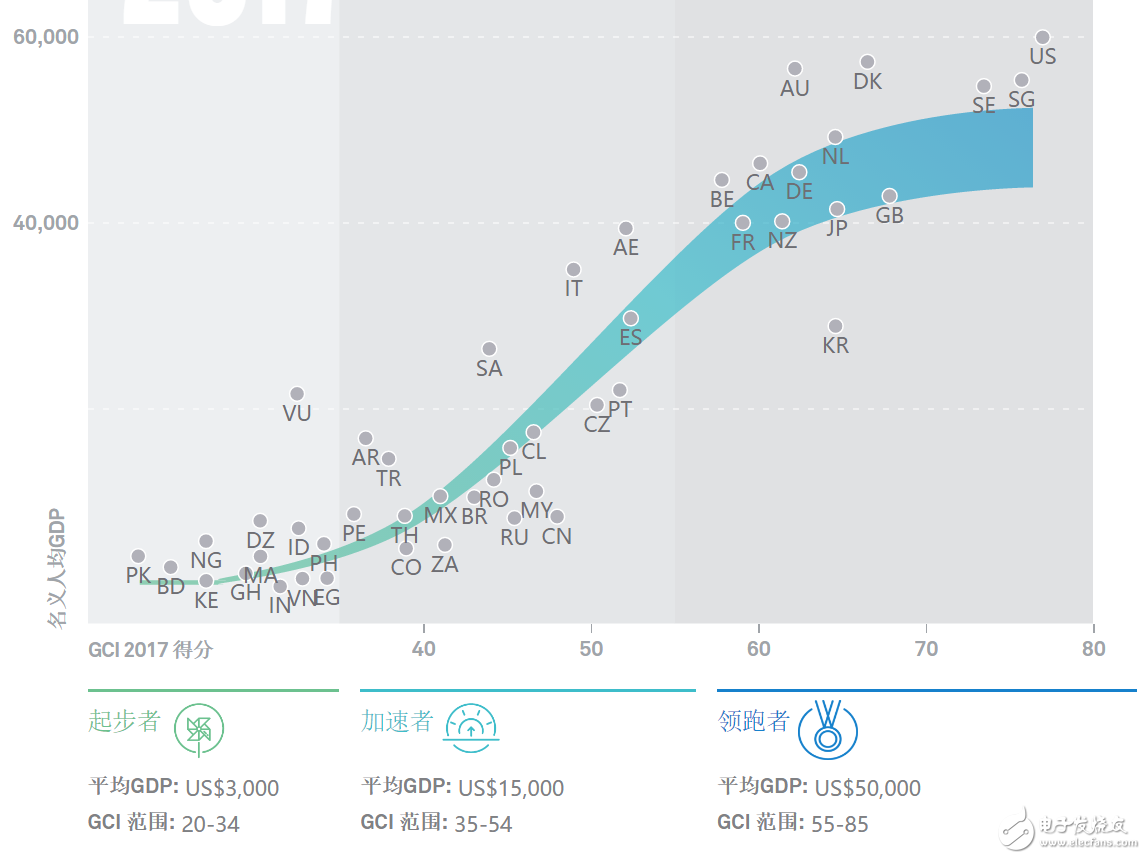According to the latest report of China Internet of Things Development 2016-2017 released by China Economic Information Service and Xinhua Wuxi IoT Consulting Center, although China’s “connection index†is currently ranked 23rd in the world, it is still an accelerator camp, but it is expected By 2020, China's M2M (connection between machines and machines) will reach 1 billion, and the Internet of Things industry will exceed 1.5 trillion yuan.

According to Xinhua News Agency reported on September 5, the Internet of Things industry chain is mainly divided into the perception layer, network layer, platform layer and application layer. Among them, at the network transmission level, the Internet of Things is different from the Internet, requiring not only a high-rate transmission network but also a low-rate, medium-rate network. The narrowband Internet of Things is a low-rate network characterized by low power consumption, wide coverage, and high penetration.
At present, the three major telecom operators in China are accelerating the construction of low-rate narrow-band Internet of Things, and high-speed 5G networks will soon arrive. The communication network standard is unified, and multiple levels of coverage have solved the problem of fragmentation of IoT applications in the past. In addition, some sensors and chips have fallen in price, consumer demand such as wearable devices, home security, and smart homes have arisen, entering the Internet of Things technology and applications. The active period of innovation laid the foundation. The Chinese Academy of Engineering academician He Hezhen said that the development of China's Internet of Things is shifting from a government-led model to a market-driven model.
According to He Hezhen, in the past few years, most of the Internet of Things applications have been done by small enterprises, and the application has been fragmented. Since last year, after the introduction of the narrowband Internet of Things standard, a number of large enterprises have begun to intervene in the development of the Internet of Things. For example, Huawei, ZTE, and the three major telecom operators have actively followed suit. Baidu, Alibaba and Tencent have also begun to enter this field. The involvement of enterprises is expected to promote the rapid development of the Internet of Things.

From the perspective of the big environment, global Internet of Things technologies and applications are also entering an active period of innovation. According to the "2016-2017 China Internet of Things Development Annual Report", about 5.5 million new devices are added to the Internet of Things every day. As of the end of 2016, the number of connected IoT devices worldwide was 6.4 billion, an increase of 30% over the previous year.
Promote auto electronics "ID card", put an end to the deck car; issue smart blood pressure meter, blood glucose meter, let the family doctor know the physical condition of the chronic disease patient in real time; install the sensing device to the fan, and "perceive" the fan operation status thousands of miles away. From the life scenes such as medical care and transportation to the production scenes such as environmental protection and manufacturing, we can “perceive†the application innovation of the Internet of Things in China.
“The traditional industry is becoming more and more intelligent, and the Internet of Things is the necessary way to achieve this result,†said Ni Guangnan, an academician of the Chinese Academy of Engineering. At present, China's traditional manufacturing industry is in the critical period of transformation and upgrading. Many professionals believe that as a new generation of information technology, the Internet of Things “opportunity†manufacturing upgrade, the integration of the two will inevitably generate huge innovation potential.
In the IoT industry chain, the two basic core technologies - sensors and chips - are our weaknesses. According to the "2016-2017 China Internet of Things Development Annual Report", about 60% of China's sensors rely on imports, and MEMS sensors are almost all dependent on imports. About 80% of core chips are imported.
Relevant professionals believe that China has strong market demand, promoted by national industrial policies, and pays attention to digestion and absorption in application. It is like high-speed rail, with application development, and breakthroughs in basic core technologies. China is in some aspects of the Internet of Things. It is entirely possible to achieve the lead.
2500 Puffs Vpae,Mini Disposable E-Cigarette,Rechargeable Disposable Vape,Thick Oil Atomizer Vaporizer Pen
Guangzhou Yunge Tianhong Electronic Technology Co., Ltd , https://www.e-cigarettesfactory.com